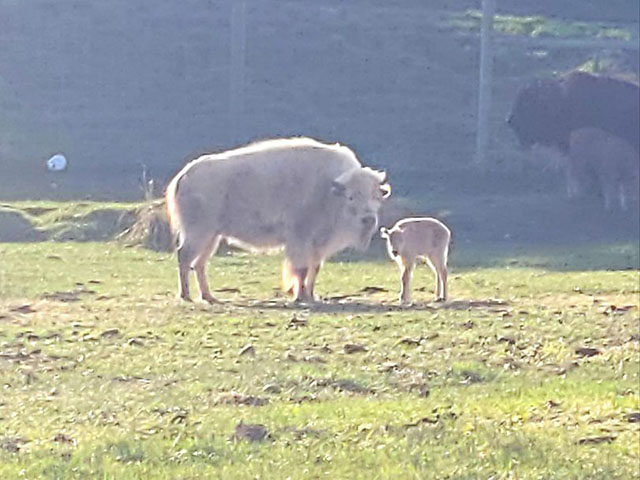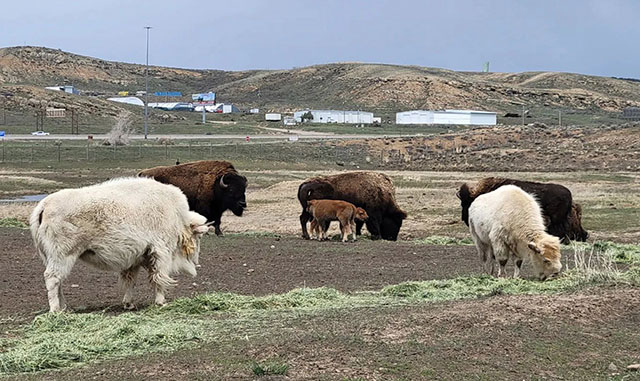A rare white bison was born near Evanston, Wyoming, on May 16 and has caused quite a stir in the community and online.
The birth took place at Bear River State Park and Superintendent Tyfani Sager told the Cowboy State Daily the sex has yet to be determined but the calf is thriving.
She also noted there was an increase in visitors to the park the week the bison was born.
“We’re not sure if it’s a bull calf or a heifer calf. They’re real furry and it’s hard to tell right off the bat,” Sager explained.
In a social media post, the park shared a photo of the calf and said its white bison had become a mother:
⚪️▫️ Well – our two-year-old white bison is now a mother!Born this morning, the calf appears mainly white! As the…
Posted by Bear River State Park on Tuesday, May 16, 2023
“Born this morning, the calf appears mainly white! As the coloration is a result of a very small amount of cattle genetics mixed in rather than a fluke like albinism or leucism, it isn’t unusual that the calf is white too. Please continue to give the bison room to try out motherhood and tend to their young!” the post read.
The Daily report cited the National Bison Association which said the birth of an albino white bison was a 1-in-10-million occurrence.
“This new baby is off-the-charts cute, but the genetics that made it white come from Charolais cattle — and it’s not albino, Sager said,” the outlet noted. “That tells this animal is fun-special but not especially genetically unique. It’s like the difference between finding an arrowhead and finding the Hope Diamond.”
In 2016, the American bison was dubbed the national mammal of the United States, per the U.S. Department of the Interior.
Now, “they’re a symbol of our American identity and one of the greatest conservation success stories of all time,” the site read:
In prehistoric times, millions of bison roamed North America — from the forests of Alaska and the grasslands of Mexico to Nevada’s Great Basin and the eastern Appalachian Mountains. Their history has been inextricably intertwined with many Indigenous communities. But by the late 1800s, there were only a few hundred bison left in the United States after European settlers pushed west, reducing the animal’s habitat and hunting the bison to near extinction. Had it not been for a few private individuals working with Tribes, states and the Department of the Interior, the bison would be extinct today.
Bison can live until they are 15 to 20-years-old, according to the Smithsonian’s National Zoo and Conservation Biology Institute.
Meanwhile, the park’s followers commented on the birth announcement, one person calling it, “Truly a blessing.”
“Absolutely gorgeous!!! Love it!” another replied.
RELATED: North Carolina Zoo Hosts Critically Endangered Newborn Red Wolf Pups:
North Carolina Zoo/AMAZING ANIMALS+ /TMX


COMMENTS
Please let us know if you're having issues with commenting.